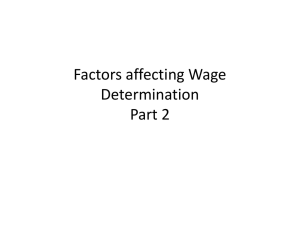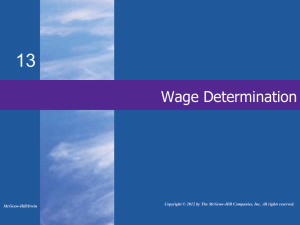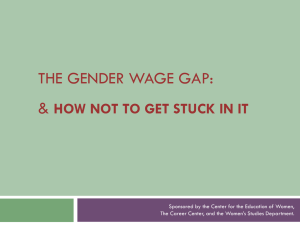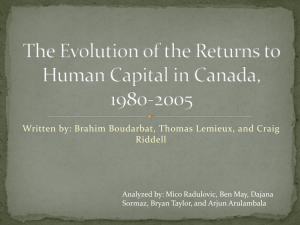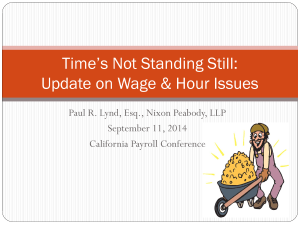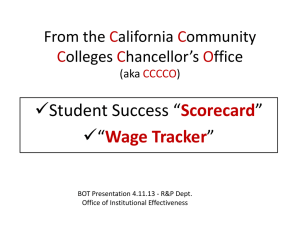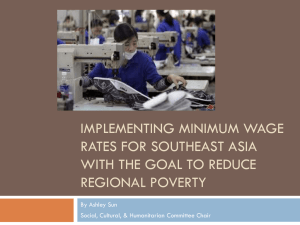Wage - Salary Administration
advertisement
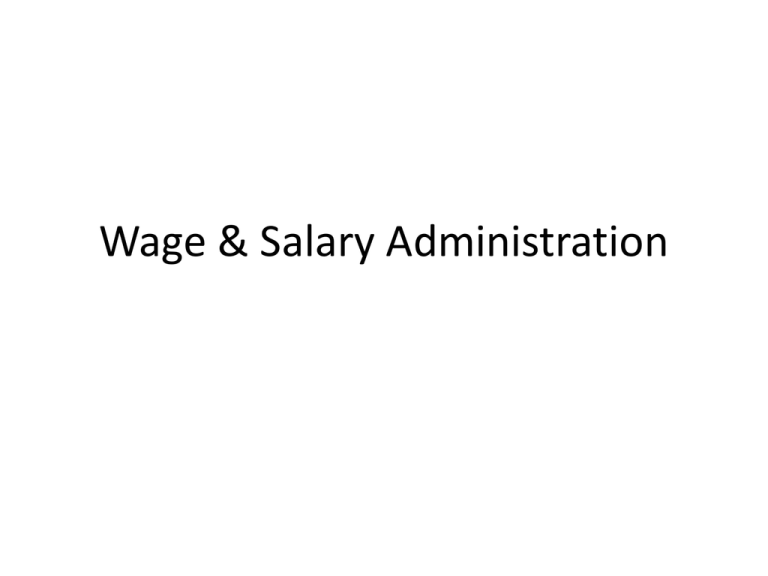
Wage & Salary Administration Wage • A wage is remuneration paid by an employer to an employee. • It may be a calculated as a fixed task based amount, or at an hourly rate, or based on an easily measured quantity of work done. • It is contrasted with salaried work, which is based on a fixed time period. Salary • A salary is a form of remuneration paid periodically by an employer to an employee • What a "Salary" looks like: $45,000 per year What a "Wage" looks like: $16.50 per hour So basically, a Salary tells you how much you'll earn either in a month or a year. While a wage tells you how much you'll earn in an hour (and a Day, too? Not sure on this). Dimensions • • • • • • Wage Structure Wage Differentials Wage Standardization Wage Policy Wage Incentives Bonus and Profit Sharing Wage Structure • Wage structure is generally the levels or hierarchy of job and pay ranges. It is the interrelationship of the levels of pay for different types of employees. pay band 1 – 5500 – 22000 (2500) pay band 2 – 9300 – 31000 (4600) pay pand 3 – 15600 – 39000 (6000) pay band 4 – 32000 – 72000 (10000) Wage Differentials • the difference in wages between workers with different skills in the same industry or between those with comparable skills in different industries or localities Wage Standardization • Standard salary rates can be determined for a job by collecting salaries from reputable salary surveys. • Match your job to the salary survey jobs using your job's description and the survey's job summary. Wage Policy • The term ‘wage policy’ refers to all systematic efforts of the Government in relation to a national wage and salary system, The policy lays down guidelines concerning the level and structure of wages. The guiding principles of national wage policy are as follows: • Sub serves the national objective of economic growth with social justice. • Promote employment, productivity and capital formation. • Remove sectorial imbalances and wage differentials. • Promote price stability. • Avoid automatic double linkages. • Ensure rising real wages consistent with the capacity of the industry and the national economy. • Have relationship with national income, state of the industry and prevailing wage rates Pay structure in India generally consists of the following components • Basic wage/salary. • Dearness allowance (D.A.) and other allowances. • Bonus and other incentives. • Fringe benefits or perquisites. Wage Incentives • Incentive pay, also known as "pay for performance" is generally given for specific performance results rather than simply for time worked. • Casual Incentives - a dinner for two at a local restaurant, or a pair of tickets to the rodeo • Structured Incentives - Benefits to employees include higher pay and satisfaction. Bonus and Profit Sharing • Bonus is a deferred wage aimed at bridging the gap between actual wage and the need based wage. • Bonus is a share of the workers in the prosperity of an enterprise. • Bonus may also be regarded as an incentive to higher productivity. • According to the Bonus Commission (1961), bonus is “sharing by the workers in the prosperity of the concern in which they are employed. Profit sharing • Profit sharing, when used as a special term, refers to various incentive plans introduced by businesses that provide direct or indirect payments to employees that depend on company's profitability in addition to employees' regular salary and bonuses.



